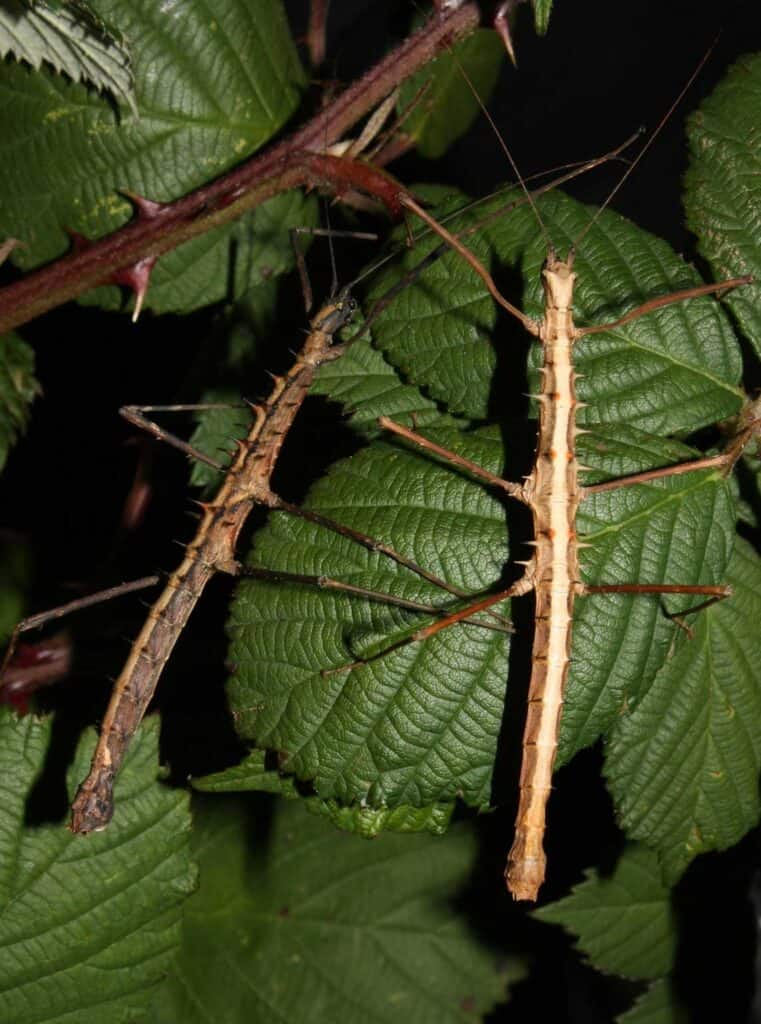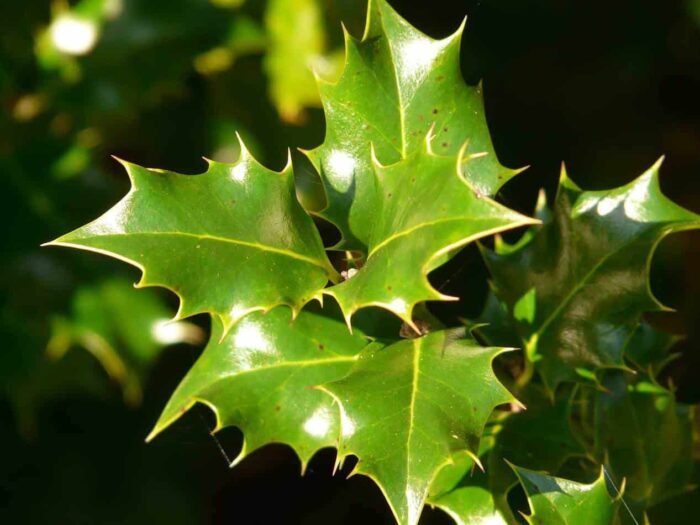Table of Contents
Stick insects are fussy creatures when it comes to what they eat. Unlike other animals, stick insects will simply starve if they do not have the right food sources around them.
So if you give them the wrong leaves, they won’t eat them and will consequently starve. This is the reason you have to take care when working out what to feed them. Here I discuss whether stick insects are capable of consuming holly.
Yes, some species of stick insect will happily eat holly leaves. Find out if your species does be placing some in their enclosure. Stick insects will not eat anything that is harmful to them, so there are no worries about harming them. Just ensure there are leaves they do like in the enclosure as well as they don’t eat leaves they do not like and so could end up starving.
For more advice and information on keeping and looking after stick insects, check out my ebook on Amazon click here
(opens in a new tab).

What Do Stick Insects Eat?
The number one piece of advice is to always make sure the leaves are fresh. Leaves that are not freshly picked will quickly shrivel and die and stick insects will not touch anything but fresh leaves. If there are any signs of browning, they won’t eat these areas of the leaves.
But what do stick insects actually eat ?
?
It depends where they are native to. For example, native Australian stick insects are able to eat eucalyptus leaves . On the other hand, stick insects native to certain parts of North America will refuse such leaves.
. On the other hand, stick insects native to certain parts of North America will refuse such leaves.
This is why you need to be careful when it comes to knowing your species. If you don’t know the species, you could make a mistake and attempt to feed them the wrong things.
Thankfully, this is normally only a problem when you are buying exotic stick insects.
In general, though, stick insects eat leaves from plants ranging from bramble to eucalyptus and rose bushes.
to eucalyptus and rose bushes.
Can Stick Insects Eat Holly – It Depends
Some stick insects are more than capable of eating holly. It is known, for example, that some Vietnamese stick insects eat holly but refuse bramble.
So how do you know what your stick insect will eat?
First, as we mentioned above, research your species and you will already have a good idea as to their favourite foods. But if you’re at a loss then the next best option is to feed them multiple sources of leaves and see which ones they eat and which ones are left.
Some experimentation will let you know all you need to know about your pet’s dietary requirements.
Serve the Food Correctly
Freshness is by far the most important factor though. When you don’t feed fresh food to your stick insects, it can cause health problems and they will end up dying.
It can also lead to an elevated level of stress, with levels actually depending on gender. Remember that males and females have different habits. For example, females do not move much while males may travel great distances.
The same goes for when stick insects are in a state of distress because of food issues. They will manifest that stress in different ways, so make sure you try to avoid anything that could induce stress.
Another factor is to take care where you source leaves like holly from. Busy roadsides mean that the holly may have been infected by car or industrial fumes, which can poison your stick insects.
The same goes for buying leaves from garden centres. These facilities (and their growers) often use anti-pest sprays and other insecticides to maintain their stock. Again, this is poisonous for stick insects.
Finally, you should also mist the leaves to give them the moisture they need. Stick insects love moisture; they will not eat dry plants, even though they may use it for camouflage. Give your food servings a misting with water from a spray bottle every time.
This is also how stick insects get the water they drink . They do not typically look for ponds or lakes in the wild. Instead, they get the moisture they need from the leaves.
. They do not typically look for ponds or lakes in the wild. Instead, they get the moisture they need from the leaves.

How Often Should I Give My Stick Insect Food?
Stick insects are known for being picky eaters, as we mentioned at the beginning of this article. But they are also voracious eaters. A colony of stick insects can devour each serving of food within a day or two.
It is for this reason that stick insects require a certain level of maintenance when it comes to food. You’ll be surprised because as most stick insects eat at night to avoid predators in their natural habitat, by the morning the food you have given them might be all gone.
Therefore, another piece of advice we can give is to always try to serve food to your stick insects at least once a day.
You should also try to place the leaves with their stems inside a small source of water to keep them fresh for longer. It is almost like life support for leaves after they have been picked!
But if you have nymphs you should take care when doing this. Nymphs that fall into the water will drown instantly as they will not have the strength needed to climb out.
The counter to this is to place a fine mosquito net over the top of the container so that they will not be able to fall in. A DIY option is to use toilet paper. It accomplishes the same thing and your stick insects won’t eat the paper, so you don’t need to worry about accidentally poisoning them.
So How Should I Test Out if My Stick Insect Can Eat Holly?
To find out if your stick insect can eat holly, try to place some fresh holly inside alongside their usual food sources. If they consume the holly, you know that they enjoy it. If they leave it, your species doesn’t like holly and will not eat it even if it’s the only food you leave for them.
Stick insects cannot be trained to adopt a different type of diet, so you will not be able to force them to eat holly.
Last Word – Some Insects Do Eat Holly
Many species of stick insect do eat holly, especially if the species in question is native to a country where holly grows naturally. But the only way to find out for sure is to experiment.
Place some holly inside the tank and observe what your stick insects do. If they do not seem to be touching it, you know to try other leaves in the future.
But the pet shop you got your stick insects from should be able to advise you on what a particular type of stick insect likes. From there it is all about experimentation.

